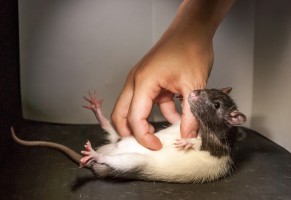Hops
|
Amount
|
Variety
|
Cost
|
Type
|
AA
|
Use
|
Time
|
IBU
|
Bill %
|
|
47 g |
Saaz47 g Saaz Hops |
|
Pellet |
3.5 |
Boil
|
60 min |
22.05 |
29.4% |
|
57 g |
Saaz57 g Saaz Hops |
|
Pellet |
3.5 |
Boil
|
30 min |
14.84 |
35.6% |
|
28 g |
Saaz28 g Saaz Hops |
|
Pellet |
3.5 |
Boil
|
10 min |
2.85 |
17.5% |
|
28 g |
Saaz28 g Saaz Hops |
|
Pellet |
3.5 |
Boil
|
0 min |
|
17.5% |
|
160 g
/ $ 0.00
|
Hops Summary
|
Amount
|
Variety
|
Cost
|
IBU
|
Bill %
|
|
160 g |
Saaz (Pellet) 160 g Saaz (Pellet) Hops |
|
39.74 |
100% |
|
160 g
/ $ 0.00
|
Mash Guidelines
|
Amount
|
Description
|
Type
|
Start Temp
|
Target Temp
|
Time
|
|
32.3 L |
Mash |
Temperature |
-- |
67 °C |
60 min |
|
|
Mash-out |
Temperature |
-- |
77 °C |
10 min |
Other Ingredients
|
Amount
|
Name
|
Cost
|
Type
|
Use
|
Time
|
|
0.50 each |
Whirlfloc
|
|
Water Agt |
Boil |
10 min. |
Priming
|
Method: Forced
CO2 Level: 2.3 Volumes |
Target Water Profile
Pilsen (Light Lager)
Notes
We recommend a method similar to a Narziss fermentation, where the first two thirds of the fermentation is done cold and the final third is done warmer. This differs from the most commonly recommended procedure for lagers, where the yeast is pitched to a relatively warm wort (60 to 68°F, 15 to 20°C), cooled over the first two days of fermentation to the primary fermentation temperature, and then warmed back up to the initial temperature for a diacetyl rest before lagering. The idea behind the Narziss fermentation is to reduce the production of esters and other less desirable compounds during the most active phases of fermentation, and to increase the yeast activity near the end of fermentation, converting most of the undesirable compounds into less offensive substances. For example, diacetyl is a buttery tasting compound that is a common flaw in warm fermented lagers. The diacetyl precursor alpha acetolactate is excreted by the yeast during the early phase of fermentation. Keeping the temperature low during that time keeps the amount of alpha-acetolactate low. Yeast will reduce diacetyl at the end of fermentation, when they are working on building their energy stores. Warming the yeast near the end of fermentation makes them more active and improves the reduction of diacetyl. The overall effect is a cleaner beer.
Assuming you have clean, healthy yeast, controlling the temperature of fermentation is the most important step. The preferred procedure for these recipes is a little different, in that we recommend chilling the wort down to 44° F (7° C) and racking the beer away from the bulk of the cold break material before oxygenating and pitching the yeast. The fermentation chamber should be set up to warm slowly over the first 36 to 48 hours to 50° F (10° C) and held at that temperature for the rest of fermentation. This results in a clean lager, with very little diacetyl. If your wort was warmer during the initial yeast growth, or your fermentation was warmer, you’ll need to do a diacetyl rest during the last couple of days of fermentation, when the airlock activity noticeably slows. Generally this will be about the fifth or sixth day after pitching. To perform a diacetyl rest, warm your beer up about 10° F (6° C) above the fermentation temperature and hold it there until fermentation is complete. This keeps the yeast active and gives them a chance to eliminate the diacetyl. Then rack the beer to a 5 gallon carboy or Cornelius keg for lagering.
In any case, don’t rush things. Good lagers take time, and they ferment more slowly than ales, especially when fermented cold. Once the beer has finished fermenting, a period of lagering for a month or more at near freezing temperatures can improve the beer. Generally, the higher the alcohol content of the beer, the longer the lagering period should be. A 5 percent alcohol by volume Munich helles might be best after 4 to 6 weeks. An 8 percent doppelbock may need 6 months or more for some of the harsher aspects of the beer to mellow and for the melding of complex flavors to occur.

Last Updated and Sharing

- Public: Yup, Shared
- Last Updated: 2016-08-31 01:15 UTC
For quick copying and pasting to a text based forum or email.
Click the Download as HTML file button below.
Recipe costs can be adjusted by changing the batch size. They won't be saved but will give you an idea of costs if your final yield was different.
|
Cost $ |
Cost % |
| Fermentables |
$ |
|
Steeping Grains
(Extract Only) |
$ |
|
| Hops |
$ |
|
| Yeast |
$ |
|
| Other |
$ |
|
| Cost Per Barrel |
$ 0.00 |
|
| Cost Per Pint |
$ 0.00 |
|
| Total Cost |
$ 0.00 |
|
Other Brewers Who Brewed This Recipe:
Discussion about this recipe:
